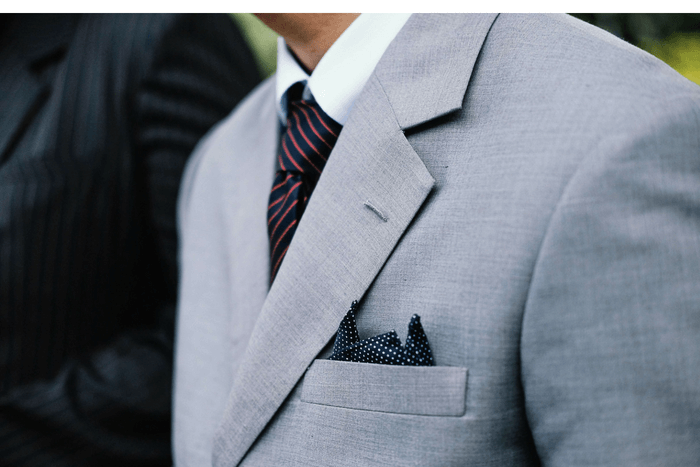
You’ve picked the perfect suit. It’s tailored and waiting in the garment bag for the big event. Then, it happens. You slip into your formalwear and have no idea what to do next. Should the jacket be buttoned? Is my tie the right length? And what about my socks? Have no fear, the ultimate men’s suit etiquette guide is here! Here’s what you need to know, from head to toe.
The Shirt
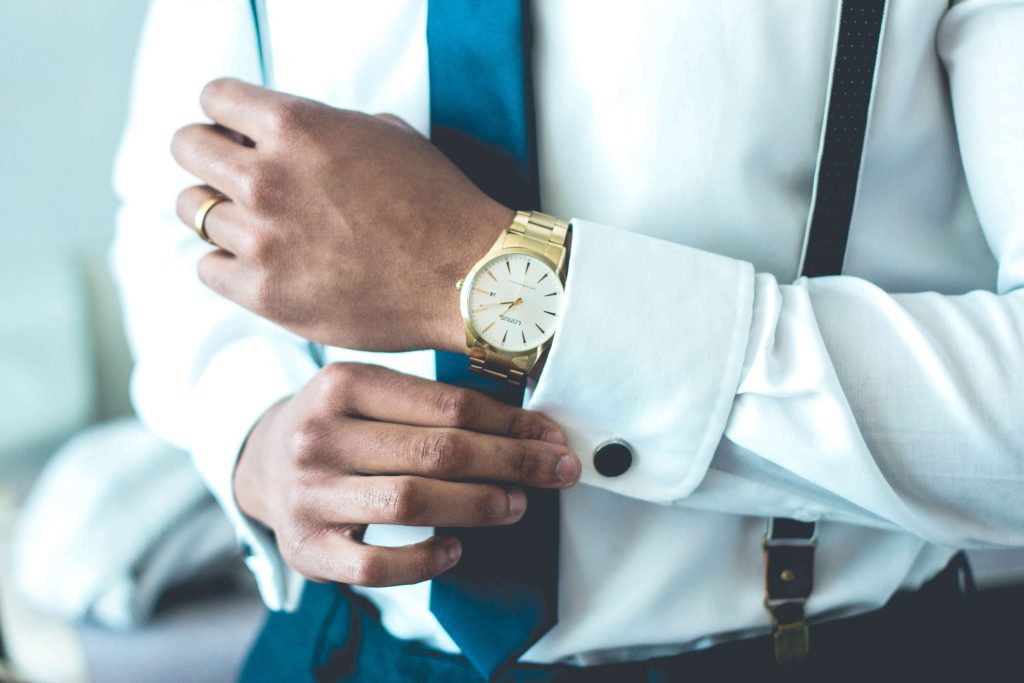
Use those buttons! When trying on your formalwear, don’t skip out on a test fit of the dress shirt. You want the neck to be the proper size so when you button up, you can still be comfortable. It’s never ok to leave a few buttons undone, especially when wearing a tie.
Do wear an undershirt with a dress shirt – it helps to wick away perspiration. Don’t forget to wear it during your test fit to ensure proper sizing.
Now peek at your wrists. Your dress shirt should cover the wrist bones but not flow over the hands. And, keep those cuffs buttoned up. We love the use of cufflinks to personalize your outfit.
The Jacket
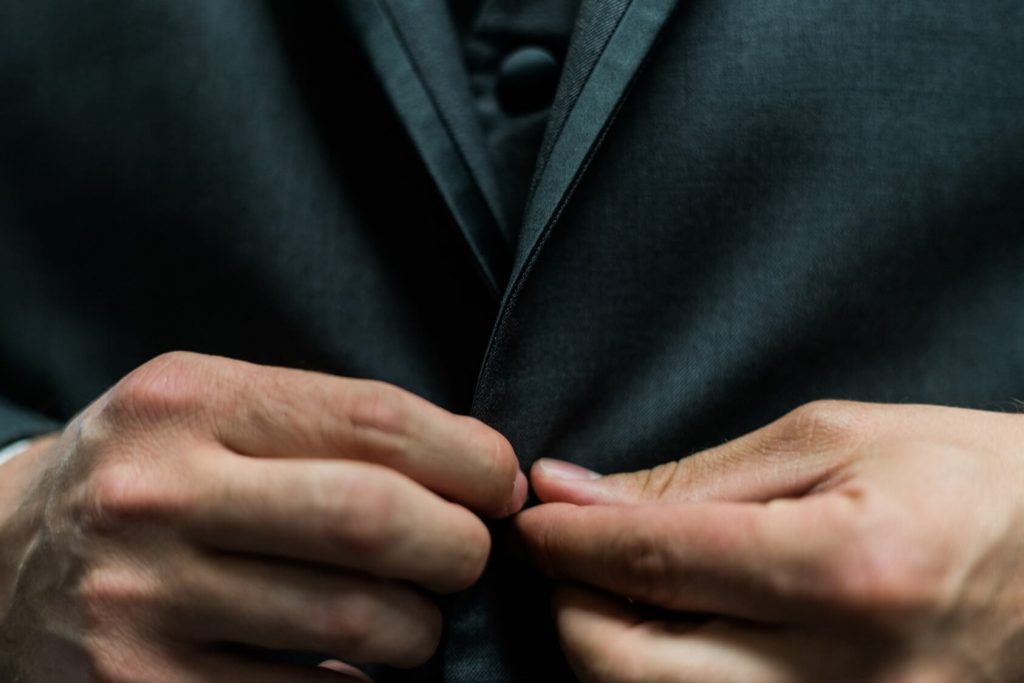
The toughest part about wearing a jacket is knowing when to keep it open and when to button up. When standing, it’s gentleman’s choice. If you use the buttons, ensure that you can easily slip your hand between the jacket and your shirt. If not, the jacket is too small. And take note: The bottom button should always be left undone on a jacket (yes, even when the top button is closed). The only exception is when wearing a one-button jacket. When seated, always leave the jacket open.
Let’s talk about fit. The shoulders of the jacket should rest atop the shoulders and gently hug to your frame. If the seams are drooping over your shoulders, the jacket is too big. Look to the lower hem. A fitted jacket should fall just at the tops of the thighs, several inches below your hip bones. If the zipper on the trousers is concealed when the jacket is closed, the jacket is a good length. Is the top button of the jacket at about navel height? Perfect!
If your jacket has a breast pocket or wide lapel, embellish it with either a boutonniere, a lapel pin, or a pocket square. Be sure to iron this fabric accessory and choose a color or pattern that coordinates with your shirt and tie.
The Tie
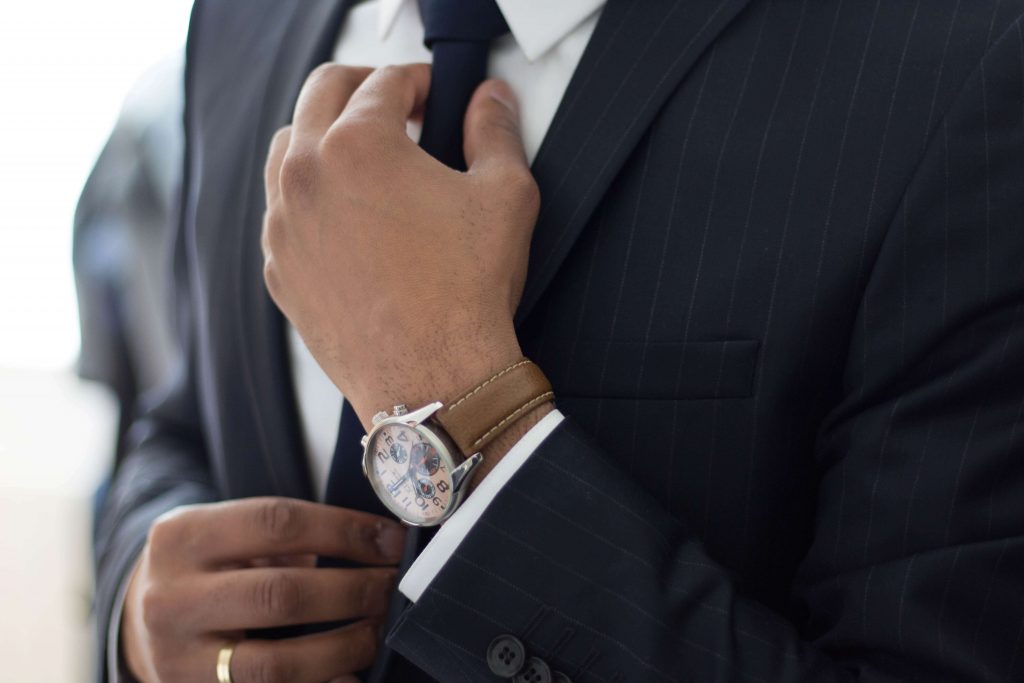
You’ve perfected a snug Windsor knot, now look down. Your tie should end just above your belt buckle or pants closure. If it’s too long or too short, tie it again! When it comes to bow ties, they’re generally one-size fits all. The bow itself should appear symmetrical, with each bow half (not including the center knot) measuring approximately three-fingers wide.
And, how does your tie look overall? Generally, men choose a tie that contrasts in color with the suit. Light suit, dark tie. Or, pinstriped suit, solid tie. Don’t be too matchy-matchy.
If you’re using a tie clip or a tie bar, it shouldn’t be wider than the tie itself.
The Pants
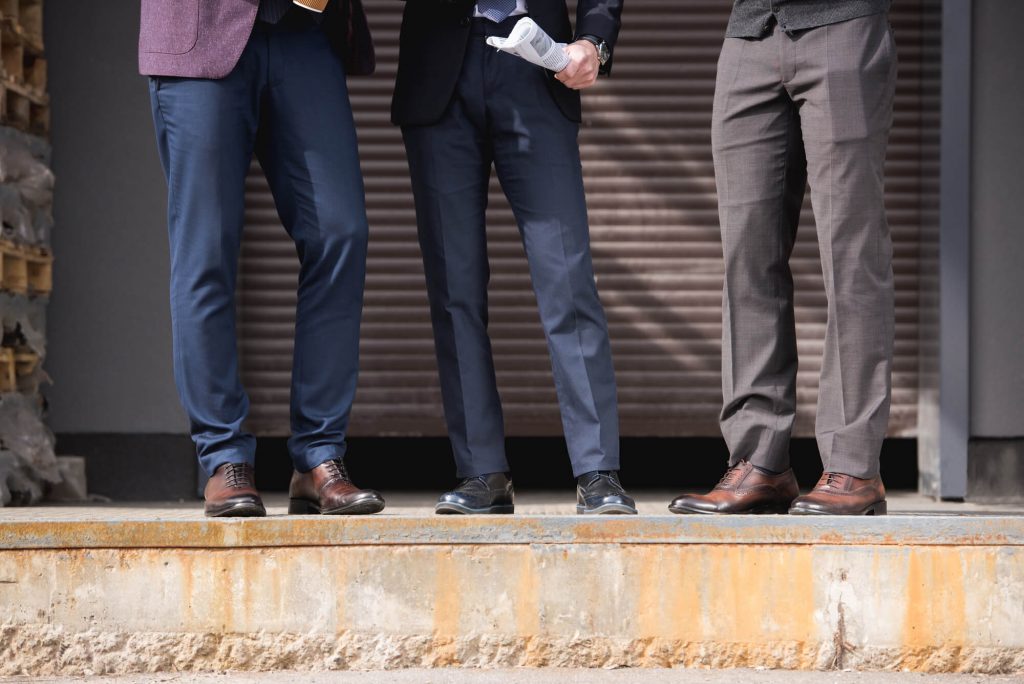
Whether you’re standing or sitting, your suit pants should never look baggy or bunchy. If they do, they’re too long or too spacious. Both issues can be fixed with some custom tailoring or selecting a different fit.
If you choose to wear suspenders, leave the belt at home. You only need one or the other when wearing a suit.
The Shoes

First, a quick note about socks. Yes, wear them. Choose something colorful and leave the white athletic socks at home. Dress socks should always be tall enough to cover any skin that might show when you’re standing or seated.
Once dressed, the hemline of your pants should cover the top of the shoe and extend forward to just before the arch when standing. Your toes are visible. You will notice a ‘break’, or small crease in the fabric of the pants if your pants are compatible with the footwear you’ve chosen. If you see piles of folds, the pants are too long.
Now that you know more about men’s suit etiquette: do you need to add a new suit to your wardrobe? Browse Jim’s Formal Wear to find the perfect outfit for your upcoming special occasions.





